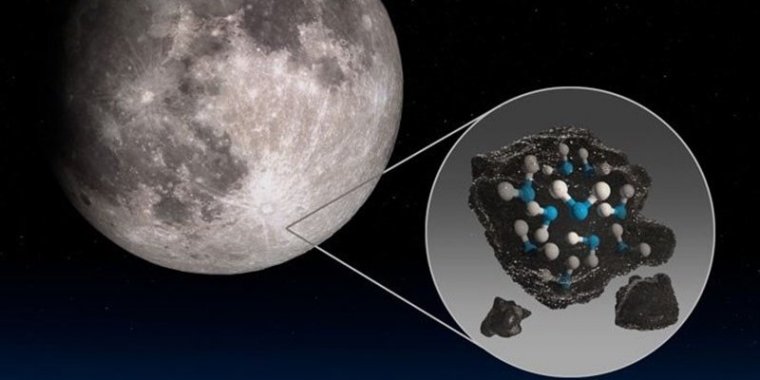| News / Space News |
Moon May Contain 300 Billion Tons of Water in Glass Beads
Glass beads on the moon's surface may contain nearly 300 billion tons of water, which could provide a way for astronauts on future lunar missions to get water in space, a team of 28 scientists said.

Moon May Contain 300 Billion Tons of Water in Glass Beads. Photo: Tasnim News Agency
Prior research in the last decades has shown that there is water on the moon. But a new study published on Monday in the Nature Geoscience journal gives insight into how humans might be able to find and harvest that water.
All smaller than a millimeter, 150 glass beads brought back to Earth were studied by a team of researchers from several Chinese institutions, including the Chinese Academy of Sciences. Two researchers at UK institutions were credited for the research as well.
The grains were collected in 2020 during China's Chang'e-5 lunar mission.
Extracting the water from these glass particles was relatively simple. All it took was heating them to 212 degrees Fahrenheit and above, said Mahesh Anand, one of the researchers on the team.
The scientists say the water was created from solar winds, which blow hydrogen — one of the two elements in water — onto the lunar surface. There, the hydrogen combines with oxygen from rocks on the moon to form water, which is stored inside the beads.
Such a process means the beads can be refilled with water as solar winds continue to blow over the moon, the study said.
The glass beads themselves form when small meteorites hit the surface of the moon and melt with material on the surface, per the study.
Still, with these beads making up around 3 to 5% of the lunar soil collected, the scientists estimate that there could be up to 297 billion tons of water in these particles. (Tasnim News Agency)
YOU MAY ALSO LIKE





